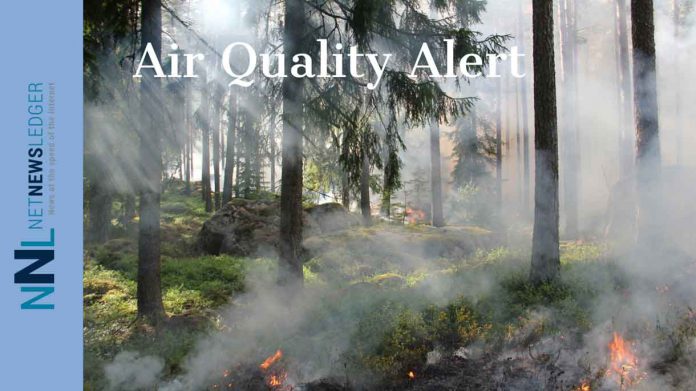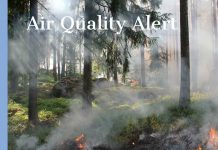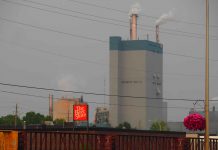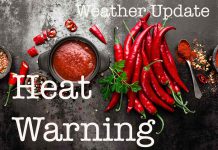Air Quality Alert: High Levels of Air Pollution
THUNDER BAY – Climate News – The presence of smoke from forest fires has resulted in high levels of air pollution, impacting the region significantly.
Areas directly impacted include Sachigo Lake, Big Trout Lake, Bearskin Lake, Webequie, Red Lake, Kenora, Nestor Falls, Armstrong, Pickle Lake, Wunnimun Lake although the air quality is likely to be impacted in other parts of the region as well.
Continuous Impact of Smoke Plumes
Smoke plumes originating from local forest fires will persist, leading to deteriorated air quality in the region.
Fluctuating Air Quality and Visibility
Air quality and visibility can vary greatly due to the presence of wildfire smoke. These conditions can fluctuate over short distances and change from hour to hour.
Detailed Information
For more detailed information, please refer to the website: www.canada.ca/en/environment-climate-change/services/air-quality-health-index/wildfire-smoke.html.
Health Risks of Wildfire Smoke
Even at low concentrations, wildfire smoke can be harmful to everyone’s health. It is crucial to continue taking actions to safeguard your well-being and minimize exposure to smoke.
Higher Risk for Vulnerable Populations
Individuals with lung disease (such as asthma) or heart disease, older adults, children, pregnant individuals, and people who work outdoors are at a higher risk of experiencing health effects caused by wildfire smoke.
Identifying Symptoms and Seeking Medical Care
If you or someone in your care experiences symptoms such as shortness of breath, wheezing (including asthma attacks), severe cough, dizziness, or chest pains, it is important to stop outdoor activities and contact your healthcare provider. If you feel unwell and experience symptoms, it is recommended to stay indoors.
Indoor Air Quality Measures
To maintain clean indoor air, keep doors and windows closed when the temperature inside your home is comfortable. Consider using an air purifier with a High Efficiency Particulate Air (HEPA) filter in a room where you spend a significant amount of time. Avoid air purifiers that produce ozone. Regularly check and change the filter as required. For more information, visit: https://www.canada.ca/en/health-canada/services/publications/healthy-living/using-portable-air-cleaner-wildfire-smoke.html.
Seeking Locations with Clean Air
Take breaks from the smoke by temporarily relocating or finding community locations with clean, cool air, such as libraries, shopping malls, or community centers. Contact your local health or municipal authorities for further guidance.
Respirator Masks for Outdoor Activities
If you must spend time outdoors, wearing a well-fitted respirator-type mask, such as a NIOSH certified N95 or equivalent respirator, can help reduce exposure to fine particles in smoke. These fine particles pose the greatest health risk. However, respirators do not provide protection against gases present in wildfire smoke. Listen to your body and reduce or stop activities if you experience symptoms.
Supporting Vulnerable Individuals
Regularly check on people in your care and those around you who may be more susceptible to the effects of smoke.
Local Authorities and Evacuation Instructions
Pay attention to information and directions provided by local authorities. Follow evacuation instructions if they are issued.
Reviewing Wildfire Smoke Plan and Medical Supplies
Review your wildfire smoke plan and ensure you have an adequate supply of medical provisions if the smoke continues to impact your community. Contact your healthcare provider if your condition does not improve.
Awareness of Mental Health
During a smoke event, it is normal to experience feelings of stress, anxiety, or isolation. If you encounter any mental health concerns, reach out to your mental health care provider for advice or visit: https://www.wellnesstogether.ca/en-CA.
Air Quality Information
Visit www.airhealth.ca for information on reducing health risks and personal contributions to pollution levels. You can also find current and forecasted Air Quality Health Index (AQHI) values on






